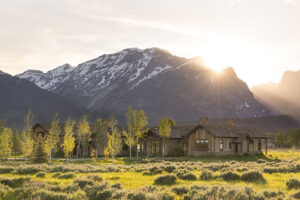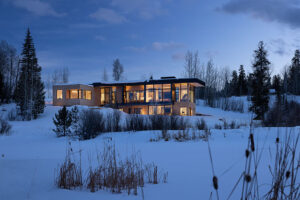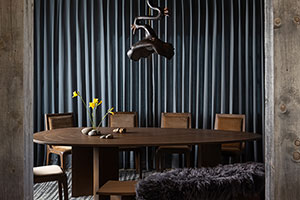September Vhay
STORY BY
Kirsten Rue
“Good composition is good composition regardless if it’s a building’s fac?ade or a painting,” says September Vhay.
She should know; she’s worked as both artist and architect. Now known primarily as a painter of expressive wildlife subjects against minimalist backgrounds, the artist nevertheless continues to identify aesthetic similarities between two careers that seem, at the outset, so different.
In the two professions, Vhay explains, “you use different parts of your brain to solve artistic problems.” Vhay’s family includes both architects and artists, so this concept makes intuitive sense to her: Her father and grandfather were both architects, her sister and great-grandfather artists. The latter, Gutzon Borglum, sculpted Mount Rushmore.
After arriving in Jackson, Vhay worked for seven years as a full-time architect while painting in her spare time. Eventually this dual life proved unsustainable. “I loved architecture,” she says, “but I felt I had more to say as a painter.” From there, she took the calculated risk to focus solely on painting for one year. She’s never looked back.
PARTI IN PROCESS
For Vhay, successful works of art and successfully designed spaces well from the same point of inspiration. In architecture, this is known as the parti—or central idea—which organizes a design concept. For every painting she creates, Vhay approaches its problem in the same fashion.
A home—living room, garage, and all—begins as a bubble diagram. “The same thing with a drawing,” she says. “I’ll do a big, loose gestural one figuring out form and then I’ll hone in on proportions and then it becomes more detailed. When everything comes together it looks simple, but there’s so much structure and thought behind how it looks simple.”
There are other tools of the trade that unexpectedly cross over as well. Architects- in-training often learn to create watercolor presentation drawings, and Vhay worked in watercolors when she made the permanent shift to painting full-time. Her skill with watercolor gives her a reverence—and caution—for protecting the white space of the paper; this cannot be recovered once the painting begins.
“That deliberateness is translated into my oil paintings—I do drawings and studies before I actually do a painting so that, by the time I get the brush to the canvas, I know where I’m going,” she elaborates. Vhay also paints in very thin layers, which allow light to hit the canvas and illuminate her subject with the freshness and depth that has become synonymous with her oeuvre.
Committed observation helps the artist grasp the singular gesture she will translate into oil
or charcoal—the fleck of light over the form; the flexion of joints. Her compositions deploy negative space in equal measure to achieve their impact. “My goal is to get the essence of an animal across to people … and backgrounds are distracting to the animal,” she says.
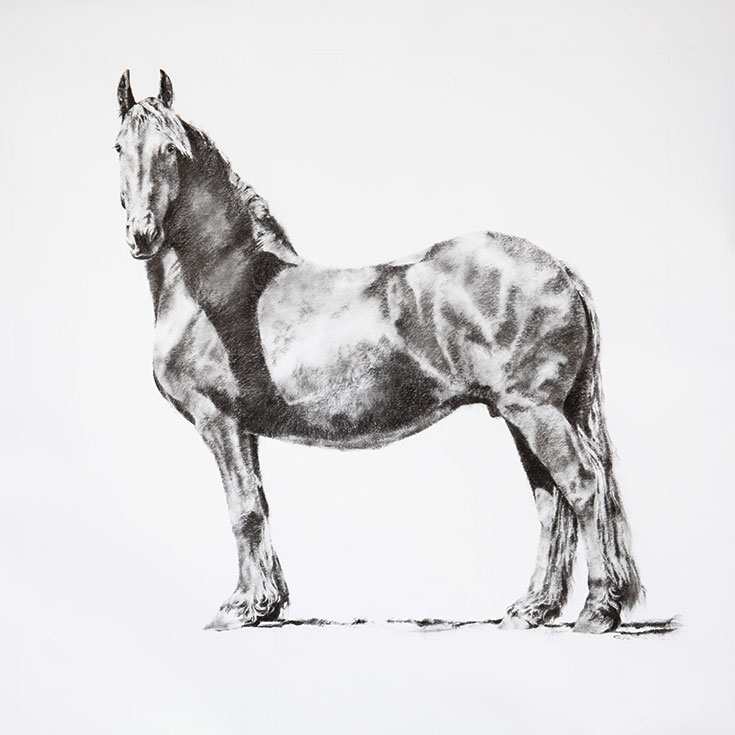
Vhay describes all of the shapes that are instrumental to a painting’s composition using the metaphor of a team. The eye of a horse? That might be the star forward, all flash and dazzle. The other elements of the painting make up the rest of the team; they must be balanced in their supporting roles. This tug towards simplicity leads Vhay to paint backgrounds with restrained textures or softened edges.
Recently, she’s played with leaving a bit of primed linen visible at the bottom of her canvases: “I like the fact that the primed linen is raw; it expresses what was there from the beginning.”
A pleasing austerity governs how Vhay prefers to appreciate the art of others as well. She explains that, when visiting a museum or show, she frequently selects just one or two paintings and studies it intently.
“I do drawings and studies before I actually do a painting so that, by the time I get the brush to the canvas, I know where I’m going.”
– Artist September Vhay
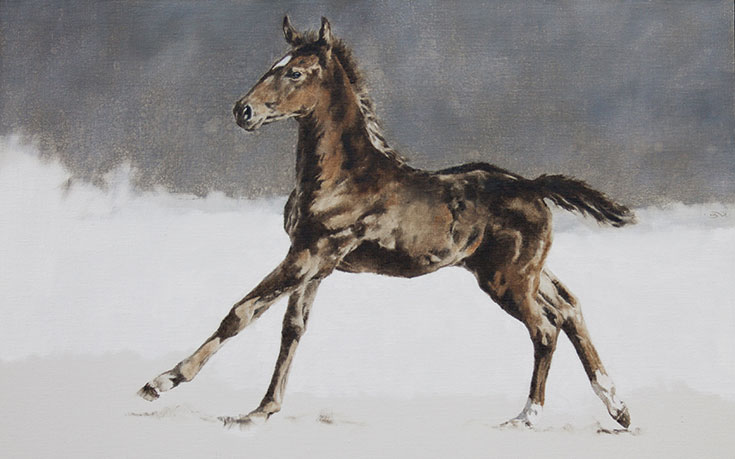
“I definitely prefer a sparsely hung gallery because then I think people experience art in its own right and are not distracted by other artwork surrounding it.” She appreciates this quality at Altamira Fine Art, where she herself is represented. The high ceilings and sparse hangings allow for plenty of time when patrons can be, in a sense, “alone” with a work.
Uncluttered interiors not only give one ample time with a work of art, they “give your mind a place to rest.” Not coincidentally, Vhay identifies with modern design; its bare aesthetic allows the focus to rest on materials and the space itself. The same principle applies to art: “The emptiness gives the viewer a space to which they can bring their perception to a painting.”
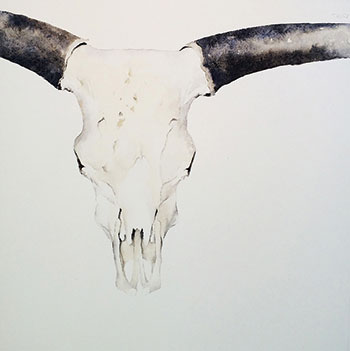
Winsome and reflective, Vhay’s paintings capture moments of pause—the inquisitive blink of a colt or the moment before a ram shifts his weight. They beckon and entreat us to breathe and simply be; a space one gladly enters.
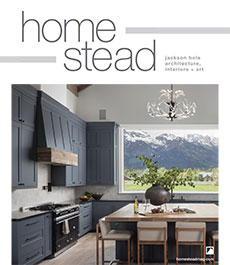

 Arts
Arts